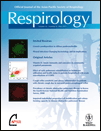Assessment and learning curve evaluation of endobronchial ultrasound skills following simulation and clinical training
This work was performed out of the Division of Respiratory Medicine, University of Calgary; Tamarratt Research Bronchoscopy Suite, Calgary, AB, Canada.
Conflict of interest statement: The University of Calgary has received grants from Olympus Canada for support of an Interventional Pulmonary Medicine Training Program and for CME events relating to EBUS. Dr A. Tremblay has received consulting fees from Olympus America. All other authors have no conflicts of interest to disclose.
ABSTRACT
Background and objective: Endobronchial ultrasound is a revolutionary diagnostic pulmonary procedure. The use of a computer endobronchial ultrasound simulator could improve trainee procedural skills before attempting to perform procedures on patients. This study aims to compare endobronchial ultrasound performance following training with simulation versus conventional training using patients.
Methods: A prospective study of pulmonary medicine and thoracic surgery trainees. Two cohorts of trainees were evaluated using simulated cases with performance metrics measured by the simulator. Group 1 received endobronchial ultrasound training by performing 15 cases on an endobronchial ultrasound simulator (n = 4). Group 2 received endobronchial ultrasound training by doing 15–25 cases on patients (n = 9).
Results: Total procedure time was significantly shorter in group 1 than group 2 (15.15 (±1.34) vs 20.00 (±3.25) min, P < 0.05). The percentage of lymph nodes successfully identified was significantly better in group 1 than group 2 (89.8 (±5.4) vs 68.1 (±5.2), P < 0.05). There was no difference between group 1 and group 2 in the percentage of successful biopsies (100.0 (±0.0) vs 90.4 (±11.5), P = 0.13). The learning curves for simulation trained fellows did not show an obvious plateau after 19 simulated cases.
Conclusions: Using an endobronchial ultrasound simulator leads to more rapid acquisition of skill in endobronchial ultrasound compared with conventional training methods, as assessed by an endobronchial ultrasound simulator. Endobronchial ultrasound simulators show promise for training with the advantage of minimizing the burden of procedural learning on patients.




